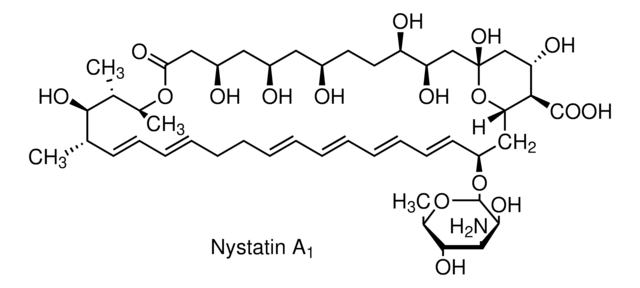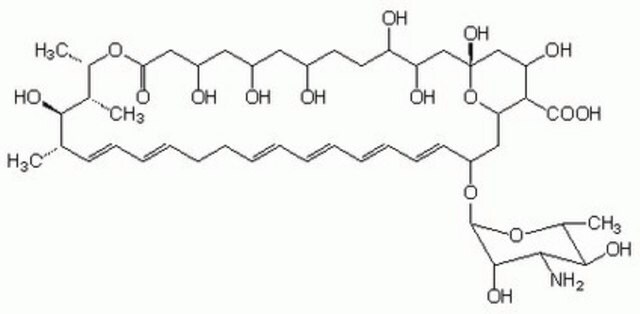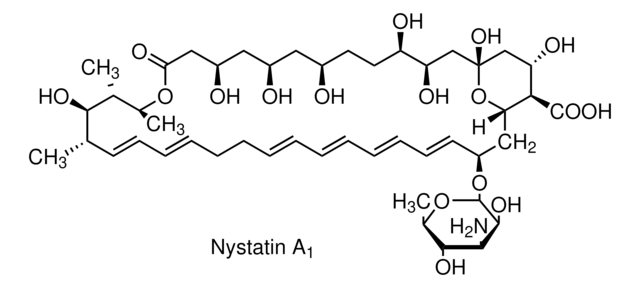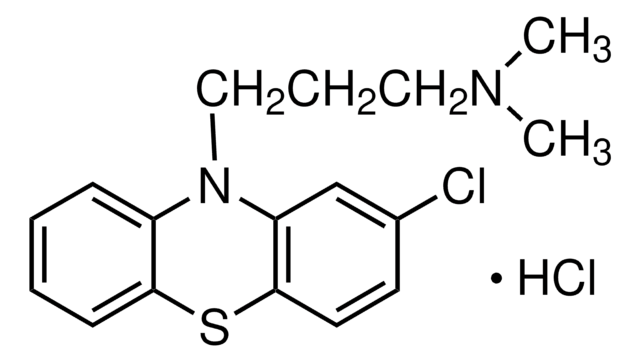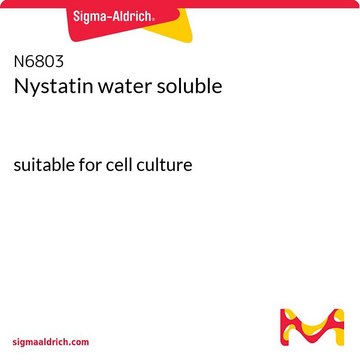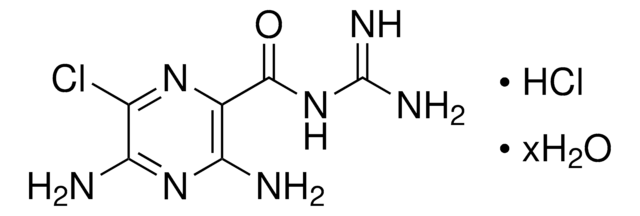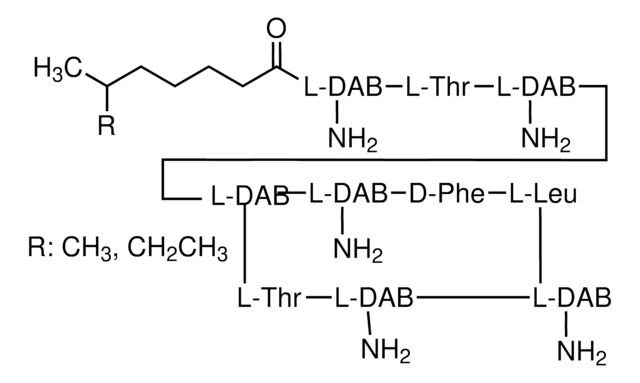N6261
Nystatin
powder, suitable for cell culture, BioReagent
Synonyme(s) :
Fungicidin, Mycostatin
About This Item
Produits recommandés
Nom du produit
Nystatin, powder, BioReagent, suitable for cell culture
Gamme de produits
BioReagent
Forme
powder
Puissance
≥4,400 per mg
Technique(s)
cell culture | mammalian: suitable
Solubilité
H2O: insoluble
Spectre d'activité de l'antibiotique
fungi
yeast
Mode d’action
cell membrane | interferes
Température de stockage
2-8°C
Chaîne SMILES
O[C@@H]([C@H](C)[C@H](C)O1)[C@@H](C)/C=C/C=C/CC/C=C/C=C/C=C/C=C/[C@H](O[C@@H]2O[C@H](C)[C@@H](O)[C@H](N)[C@@H]2O)C[C@@]3([H])[C@H](C(O)=O)[C@@H](O)C[C@](O)(O3)C[C@@H](O)[C@H](O)CC[C@@H](O)C[C@@H](O)C[C@@H](O)CC1=O
InChI
1S/C47H75NO17/c1-27-17-15-13-11-9-7-5-6-8-10-12-14-16-18-34(64-46-44(58)41(48)43(57)30(4)63-46)24-38-40(45(59)60)37(54)26-47(61,65-38)25-36(53)35(52)20-19-31(49)21-32(50)22-33(51)23-39(55)62-29(3)28(2)42(27)56/h5-6,8,10-18,27-38,40-44,46,49-54,56-58,61H,7,9,19-26,48H2,1-4H3,(H,59,60)/b6-5+,10-8+,13-11+,14-12+,17-15+,18-16+/t27-,28+,29-,30+,31+,32+,33+,34-,35+,36+,37-,38-,40+,41-,42+,43+,44-,46-,47+/m0/s1
Clé InChI
VQOXZBDYSJBXMA-QEKUPDCNSA-N
Vous recherchez des produits similaires ? Visite Guide de comparaison des produits
Catégories apparentées
Description générale
Application
- for the treatment of human macrophage cell line U937, to study the effect of nystatin on the production of IL-8 (interleukin 8) by silver nanoparticle-treated U937 cell line
- to determine its effect on intracellular accumulation of OxLDL (oxidized low density lipoprotein) mediated by SR-BI (scavenger receptor class B type I) in COS-7 cell line
- as a lipid raft modulator on mice macrophages to study the relationship between increased number of lipid rafts and the heightened response of TNF-α (tumor necrosis factor)
Actions biochimiques/physiologiques
Antimicrobial spectrum: Nystatin acts against fungi, yeasts and molds.
Attention
Notes préparatoires
Autres remarques
Produit(s) apparenté(s)
Code de la classe de stockage
11 - Combustible Solids
Classe de danger pour l'eau (WGK)
WGK 2
Point d'éclair (°F)
Not applicable
Point d'éclair (°C)
Not applicable
Équipement de protection individuelle
Eyeshields, Gloves, type N95 (US)
Faites votre choix parmi les versions les plus récentes :
Déjà en possession de ce produit ?
Retrouvez la documentation relative aux produits que vous avez récemment achetés dans la Bibliothèque de documents.
Les clients ont également consulté
Notre équipe de scientifiques dispose d'une expérience dans tous les secteurs de la recherche, notamment en sciences de la vie, science des matériaux, synthèse chimique, chromatographie, analyse et dans de nombreux autres domaines..
Contacter notre Service technique